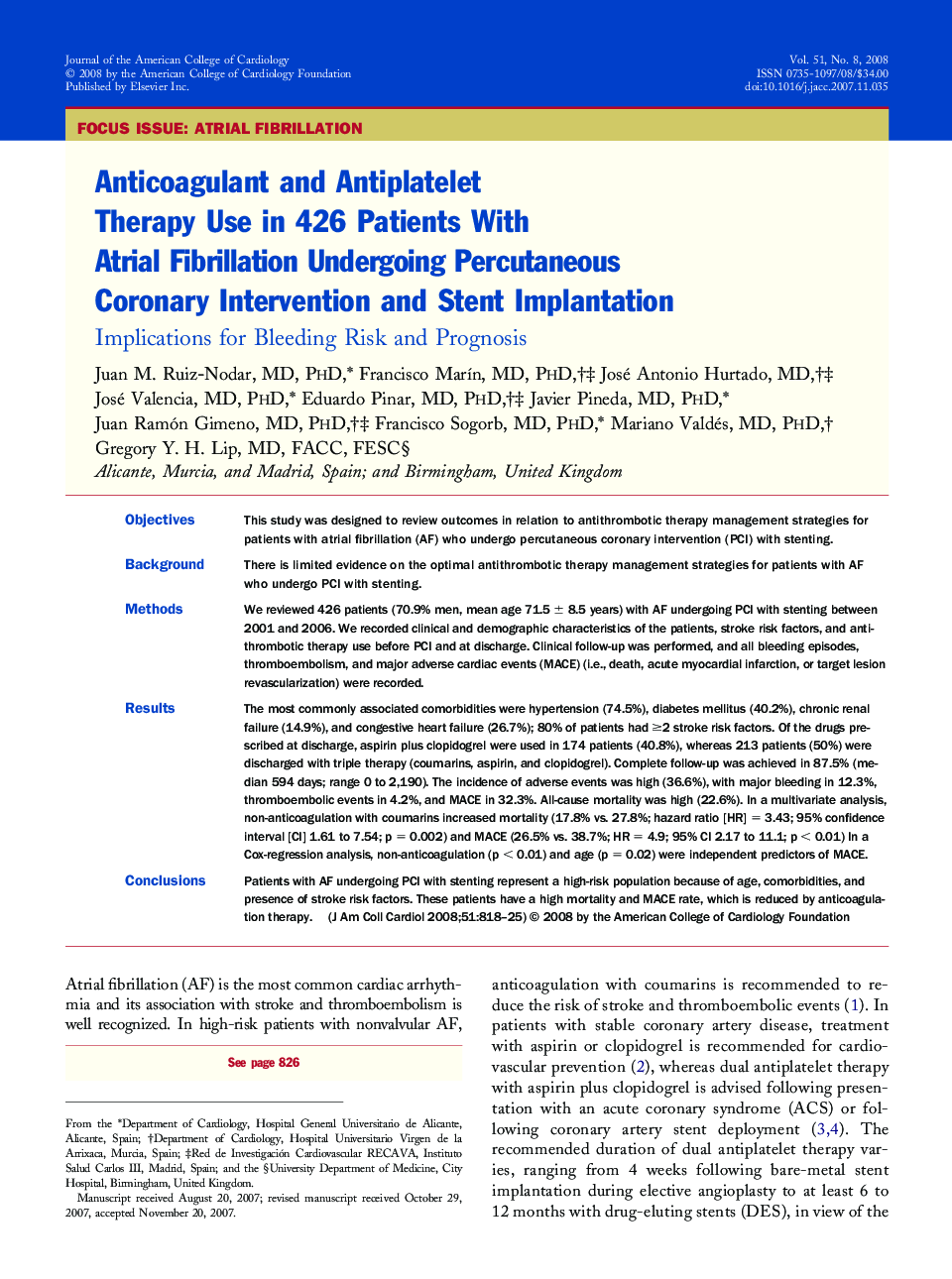| کد مقاله | کد نشریه | سال انتشار | مقاله انگلیسی | نسخه تمام متن |
|---|---|---|---|---|
| 2954043 | 1577435 | 2008 | 8 صفحه PDF | دانلود رایگان |

ObjectivesThis study was designed to review outcomes in relation to antithrombotic therapy management strategies for patients with atrial fibrillation (AF) who undergo percutaneous coronary intervention (PCI) with stenting.BackgroundThere is limited evidence on the optimal antithrombotic therapy management strategies for patients with AF who undergo PCI with stenting.MethodsWe reviewed 426 patients (70.9% men, mean age 71.5 ± 8.5 years) with AF undergoing PCI with stenting between 2001 and 2006. We recorded clinical and demographic characteristics of the patients, stroke risk factors, and antithrombotic therapy use before PCI and at discharge. Clinical follow-up was performed, and all bleeding episodes, thromboembolism, and major adverse cardiac events (MACE) (i.e., death, acute myocardial infarction, or target lesion revascularization) were recorded.ResultsThe most commonly associated comorbidities were hypertension (74.5%), diabetes mellitus (40.2%), chronic renal failure (14.9%), and congestive heart failure (26.7%); 80% of patients had ≥2 stroke risk factors. Of the drugs prescribed at discharge, aspirin plus clopidogrel were used in 174 patients (40.8%), whereas 213 patients (50%) were discharged with triple therapy (coumarins, aspirin, and clopidogrel). Complete follow-up was achieved in 87.5% (median 594 days; range 0 to 2,190). The incidence of adverse events was high (36.6%), with major bleeding in 12.3%, thromboembolic events in 4.2%, and MACE in 32.3%. All-cause mortality was high (22.6%). In a multivariate analysis, non-anticoagulation with coumarins increased mortality (17.8% vs. 27.8%; hazard ratio [HR] = 3.43; 95% confidence interval [CI] 1.61 to 7.54; p = 0.002) and MACE (26.5% vs. 38.7%; HR = 4.9; 95% CI 2.17 to 11.1; p < 0.01) In a Cox-regression analysis, non-anticoagulation (p < 0.01) and age (p = 0.02) were independent predictors of MACE.ConclusionsPatients with AF undergoing PCI with stenting represent a high-risk population because of age, comorbidities, and presence of stroke risk factors. These patients have a high mortality and MACE rate, which is reduced by anticoagulation therapy.
Journal: Journal of the American College of Cardiology - Volume 51, Issue 8, 26 February 2008, Pages 818–825